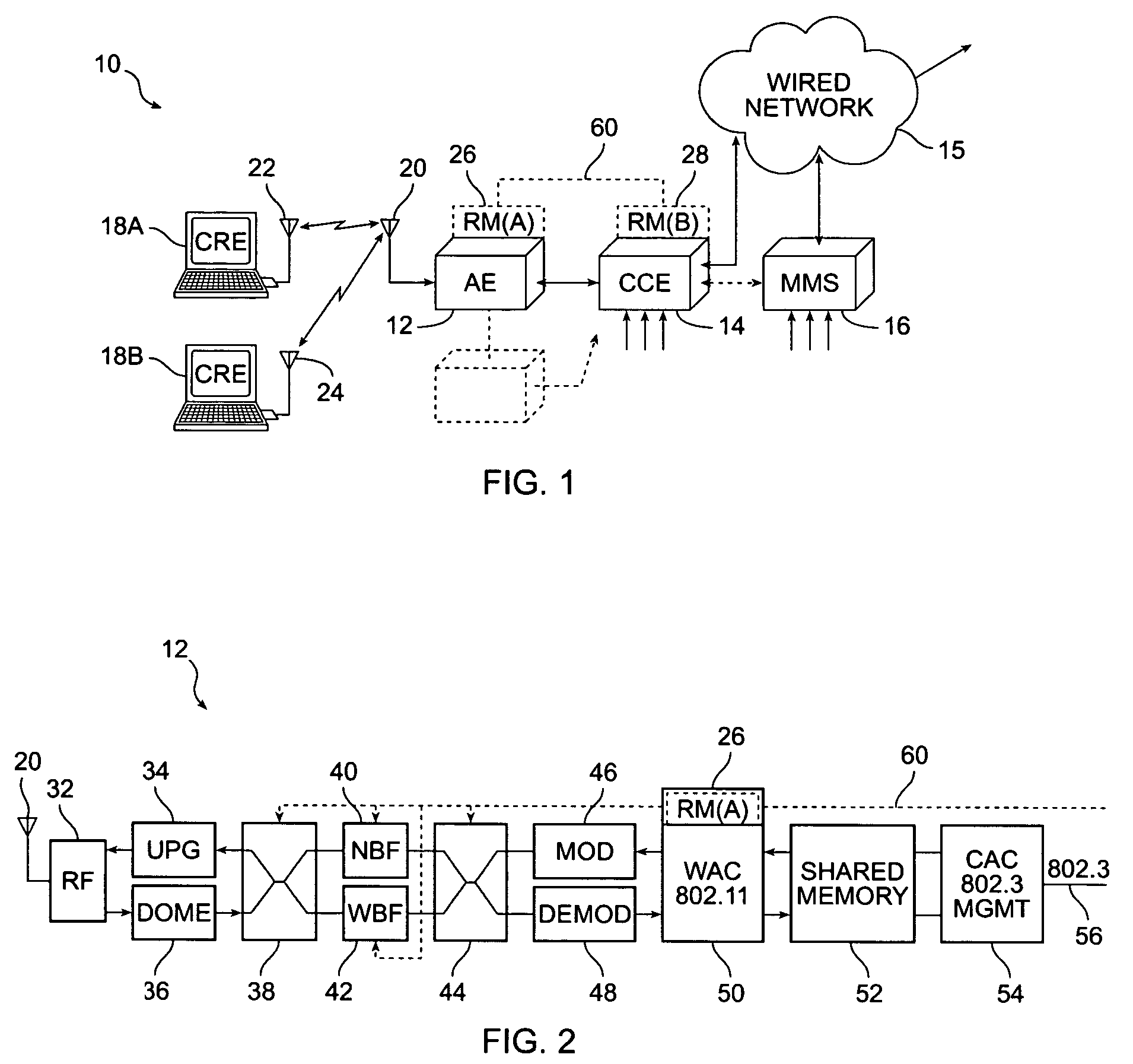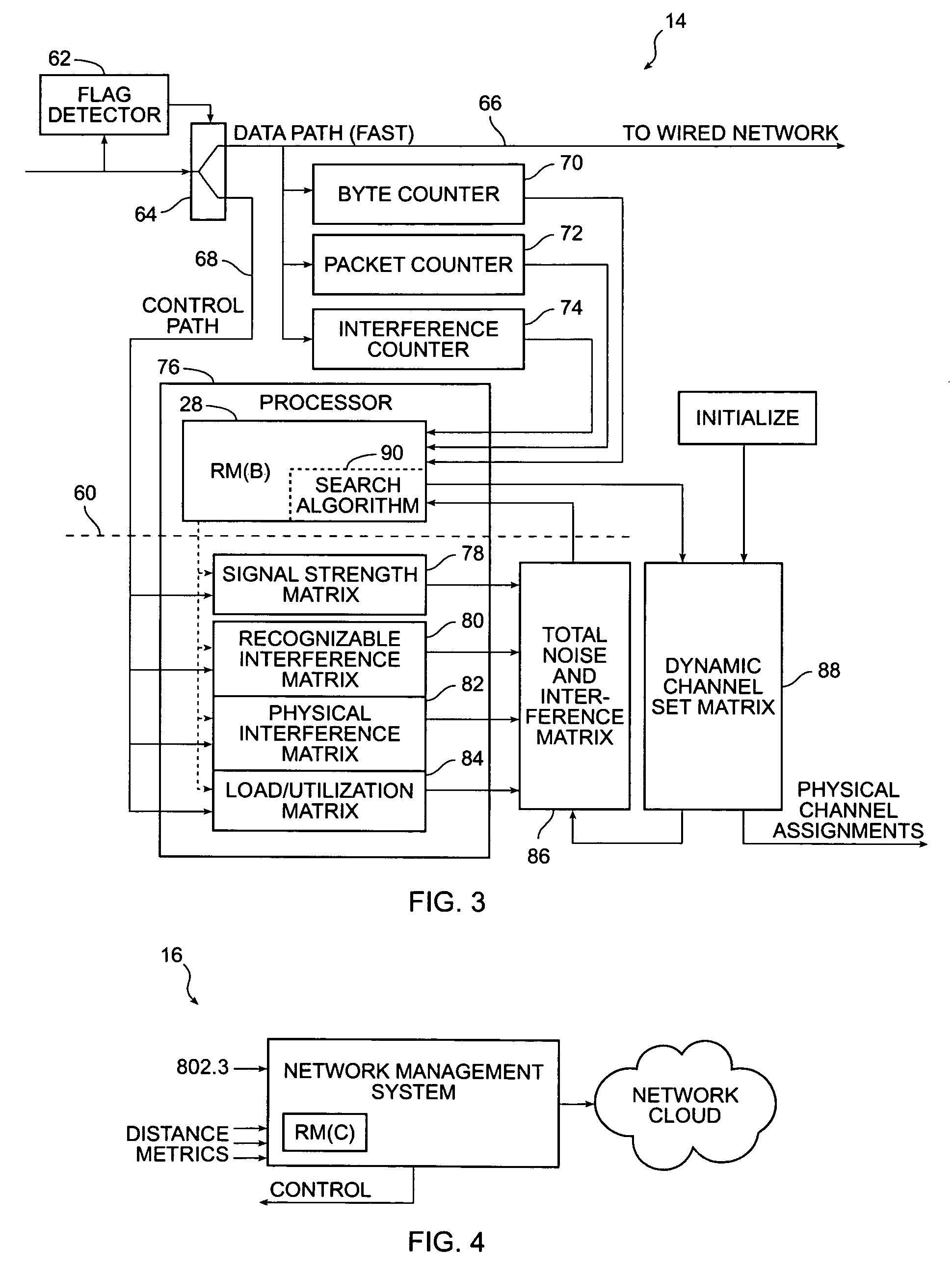Method and system for dynamically assigning channels across multiple access elements in a wireless LAN
a wireless lan and access element technology, applied in the field of wireless local area networks, can solve the problems of significant degrading communication performance, physical realizable networks, and inability to ensure that neighboring access elements do not use duplicate channels in denser areas, so as to minimize this effect, maximize user performance, and optimize network performance
- Summary
- Abstract
- Description
- Claims
- Application Information
AI Technical Summary
Benefits of technology
Problems solved by technology
Method used
Image
Examples
Embodiment Construction
[0021]Reference is made to FIG. 1. A specific embodiment of the invention comprises a wireless communication system 10 which includes an access element 12, a central control element 14, a network management system 16 and one or more client remote elements 18A, 18B in wireless contact on one of a limited number of wireless channels. The access element 12 includes the means to communicate with the client remote elements 18A, 18B using a wireless LAN protocol, usually via conventional antennas 20, 22, 24. The control and network management functionality according to the invention is imbedded in and distributed between the access element 12 and the central control element 14 as Resource Manager (A) module 26 and Resource Manager (B) module 28, as hereinafter explained. Data is communicated to a wired network 15 with the outside world. The network management system 16 is in logical communication with the central control element 14 for control purposes. The Radio Resource Manager (RM [60]...
PUM
 Login to View More
Login to View More Abstract
Description
Claims
Application Information
 Login to View More
Login to View More - R&D
- Intellectual Property
- Life Sciences
- Materials
- Tech Scout
- Unparalleled Data Quality
- Higher Quality Content
- 60% Fewer Hallucinations
Browse by: Latest US Patents, China's latest patents, Technical Efficacy Thesaurus, Application Domain, Technology Topic, Popular Technical Reports.
© 2025 PatSnap. All rights reserved.Legal|Privacy policy|Modern Slavery Act Transparency Statement|Sitemap|About US| Contact US: help@patsnap.com



